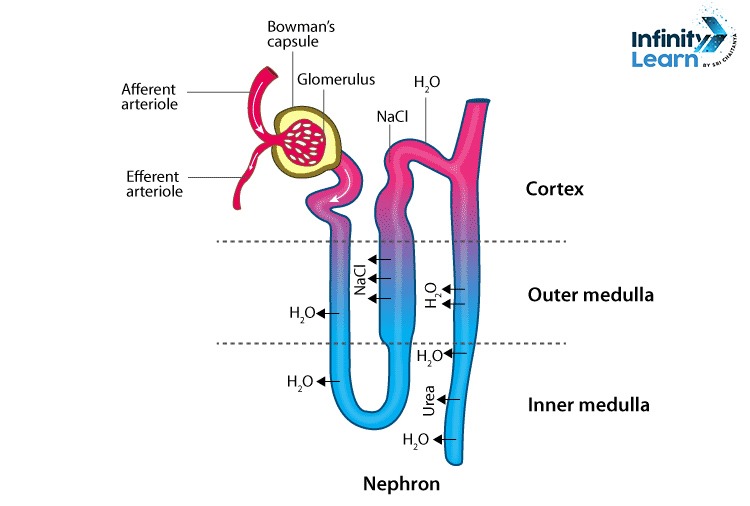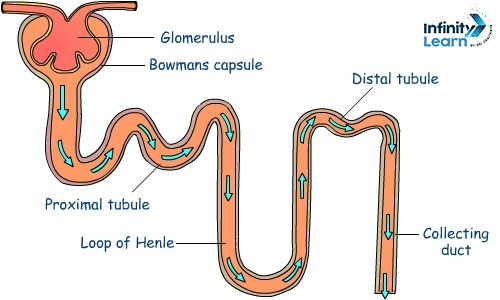Table of Contents
The renal tubule is a crucial part of the nephron, the functional unit of the kidney, playing a vital role in the body’s ability to filter and reabsorb substances from the blood to form urine. Understanding the structure and function of the renal tubule is essential for comprehending how the kidneys maintain homeostasis.
What is Renal Tubule?
The renal tubule is a complex structure within the nephron of the kidney that processes the filtrate from the blood to form urine. It is involved in the selective reabsorption and secretion of various substances, crucial for maintaining the body’s fluid and electrolyte balance.
Structure of Renal Tubule

The renal tubule consists of several distinct parts, each with specific functions. The primary segments include:
- Proximal Convoluted Tubule (PCT): This initial segment is lined with epithelial cells that have microvilli, increasing the surface area for reabsorption.
- Loop of Henle: This segment dips into the medulla and has a descending limb, a thin ascending limb, and a thick ascending limb, each contributing to the concentration of urine.
- Distal Convoluted Tubule (DCT): This segment, shorter and less convoluted than the PCT, plays a role in the selective reabsorption and secretion of ions.
- Collecting Duct: Multiple nephrons empty into each collecting duct, which further concentrates urine as it travels to the renal pelvis.
Renal Tubule Diagram
A renal tubule diagram typically illustrates the complex structure of the nephron, highlighting each part of the tubule and its relation to the blood vessels. Diagrams are essential for visualizing how the nephron functions within the kidney.

Parts of Renal Tubule
The renal tubule is a vital component of the nephron in the kidney, responsible for filtering blood and forming urine. It comprises several distinct parts, each with specific functions. Here are the main parts of the renal tubule:
- Proximal Convoluted Tubule (PCT)
- Location: Closest to the glomerulus.
- Function: Reabsorbs water, ions, and nutrients back into the bloodstream. It also secretes waste products into the tubular fluid.
- Loop of Henle
- Location: Extends into the medulla of the kidney.
- Function: Has a descending limb (reabsorbs water) and an ascending limb (reabsorbs ions). It plays a crucial role in concentrating urine and maintaining the body’s salt balance.
- Distal Convoluted Tubule (DCT)
- Location: Further away from the glomerulus, after the Loop of Henle.
- Function: Reabsorbs sodium and calcium ions while secreting potassium and hydrogen ions into the tubular fluid. It helps regulate pH and electrolyte balance.
- Collecting Duct
- Location: Extends from the cortex through the medulla to the renal pelvis.
- Function: Collects urine from multiple nephrons and finalizes the concentration of urine. It responds to antidiuretic hormone (ADH) to regulate water reabsorption.
Each of these parts works in coordination to ensure efficient filtration, reabsorption, and secretion, ultimately producing urine that maintains the body’s fluid and electrolyte balance.
Renal Tubule Function
The primary functions of the renal tubule include:
- Reabsorption: The process of reclaiming water, ions, and nutrients from the filtrate back into the bloodstream.
- Secretion: The selective addition of substances from the blood into the filtrate.
- Concentration of Urine: Regulation of water reabsorption to produce concentrated or diluted urine, depending on the body’s needs.
Nephron Renal Tubule
The nephron, consisting of the renal corpuscle and renal tubule, is the kidney’s microscopic filtration unit. The renal corpuscle filters blood, while the renal tubule adjusts the composition of the filtrate through reabsorption and secretion, ultimately forming urine.
Renal Tubule and the Kidney
The kidneys function to filter toxins and waste from the blood, producing urine. Nephrons, the primary filtration units within the kidneys, carry out this essential process. Within the nephron, the renal tubule is responsible for balancing electrolytes and absorbing water. The term “renal” pertains specifically to the kidneys.
| Biology Topics List | |
| Conserving Endangered Species | Advancements in Biotechnology |
| Sexual Reproduction in Organisms | Environmental Impact Assessment |
| Types of Reproduction in Organisms | Asexual Reproduction in Organisms |
| Passiflora Caerulea | Animal Cell |
| Hypermetropia (Hyperopia) | Food Chain |
| Laterite Soil | Types of Soil |
| Plant Cell Structure | Sense Organs Its Five Types |
| Kingdom Fungi | Father of Biology |
Conclusion
The renal tubule is essential for kidney function, playing a critical role in filtering blood, reabsorbing necessary substances, and secreting waste products. Understanding its structure and function is vital for comprehending how the kidneys maintain overall body homeostasis.
FAQs on Renal Tubule
What are the four parts of the renal tubules?
The four parts of the renal tubules are the Proximal Convoluted Tubule (PCT), Loop of Henle, Distal Convoluted Tubule (DCT), and Collecting Duct. Each part plays a specific role in filtering and processing urine.
What does the renal tubular do?
The renal tubular reabsorbs essential substances like water, ions, and nutrients from the filtered blood and secretes waste products into the tubular fluid for excretion as urine.
What is the function of the tubule?
The function of the tubule is to reabsorb water and vital nutrients back into the bloodstream and to excrete waste products and excess substances into the urine.
What is a renal tubule?
A renal tubule is a part of the nephron in the kidney responsible for filtering blood, reabsorbing necessary substances, and forming urine.
What is the size of the renal tubule?
The renal tubule is typically around 30-40 mm in length, consisting of several segments that each perform specific filtration and reabsorption tasks.








